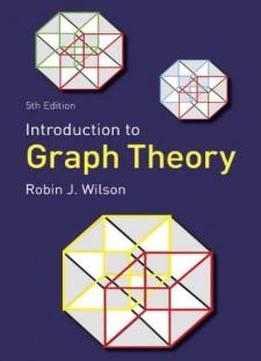
Introduction To Graph Theory (5th Edition)
by Robin J. Wilson /
2012 / English / PDF
24.4 MB Download
In recent years graph theory has emerged as a subject in its own
right, as well as being an important mathematical tool in such
diverse subjects as operational research, chemistry, sociology and
genetics. Robin Wilson's book has been widely used as a text for
undergraduate courses in mathematics, computer science and
economics, and as a readable introduction to the subject for
non-mathematicians. The opening chapters provide a basic foundation
course, containing definitions and examples, connectedness,
Eulerian and Hamiltonian paths and cycles, and trees, with a range
of applications. This is followed by two chapters on planar graphs
and colouring, with special reference to the four-colour theorem.
The next chapter deals with transversal theory and connectivity,
with applications to network flows. A final chapter on matroid
theory ties together material from earlier chapters, and an
appendix discusses algorithms and their efficiency.
In recent years graph theory has emerged as a subject in its own
right, as well as being an important mathematical tool in such
diverse subjects as operational research, chemistry, sociology and
genetics. Robin Wilson's book has been widely used as a text for
undergraduate courses in mathematics, computer science and
economics, and as a readable introduction to the subject for
non-mathematicians. The opening chapters provide a basic foundation
course, containing definitions and examples, connectedness,
Eulerian and Hamiltonian paths and cycles, and trees, with a range
of applications. This is followed by two chapters on planar graphs
and colouring, with special reference to the four-colour theorem.
The next chapter deals with transversal theory and connectivity,
with applications to network flows. A final chapter on matroid
theory ties together material from earlier chapters, and an
appendix discusses algorithms and their efficiency.











